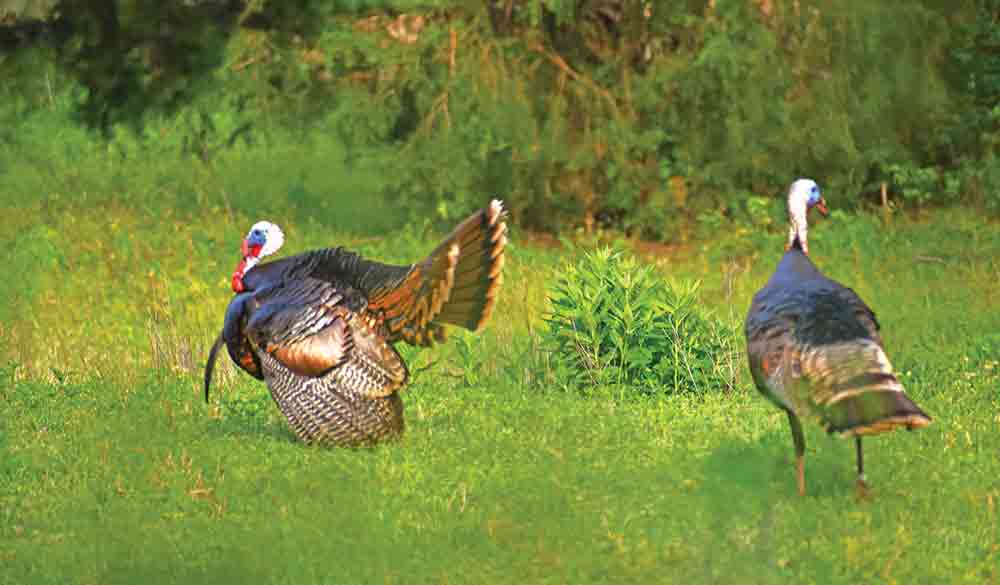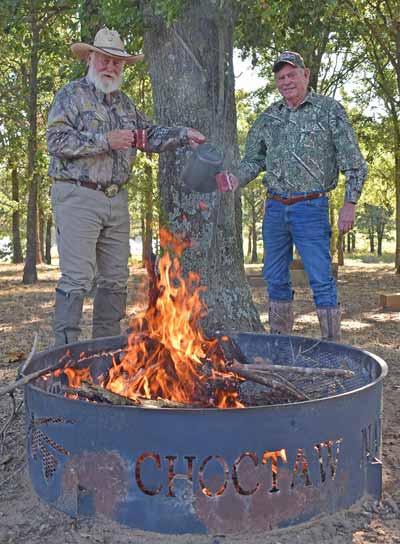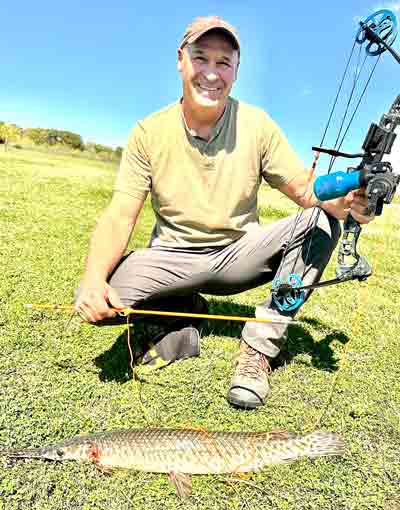A TASTY GERMAN MEAL, FIELD TO TABLE
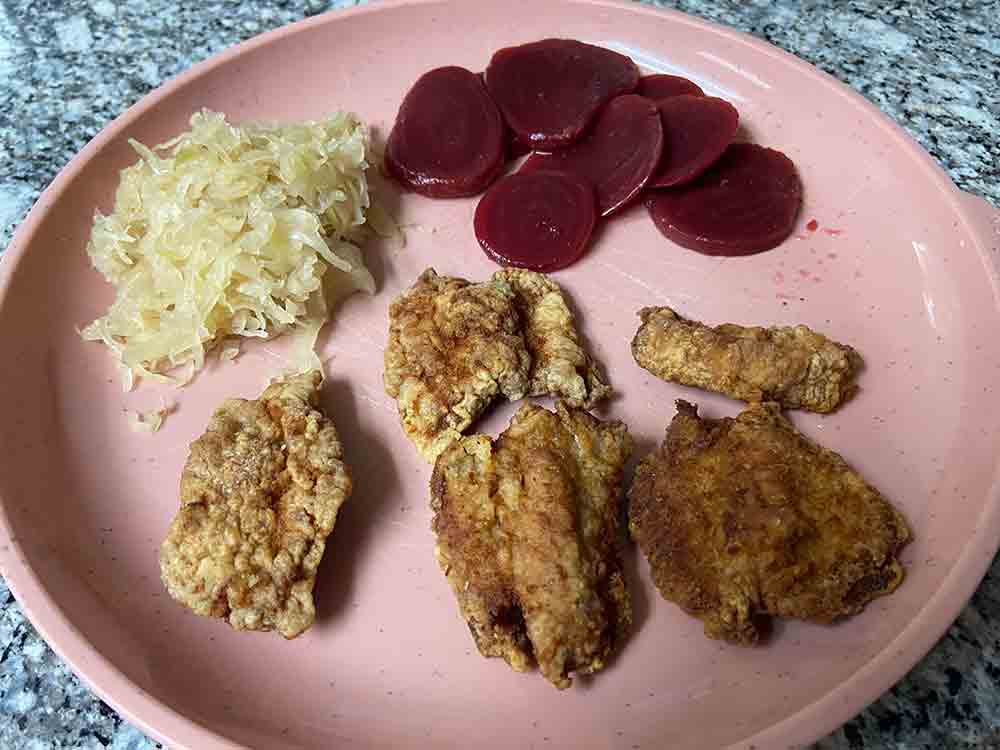 From the field to the table, Luke makes the most of the wild hogs he hunts. Photo by Luke Clayton
From the field to the table, Luke makes the most of the wild hogs he hunts. Photo by Luke Clayton
My family and friends that know me well often joke about the way I go about planning a hunt. I almost always have the hunt planned out in my mind before I ever hit the woods, everything from the time I expect game (hogs this time of year) to show up to the seasoning I plan to use on the meat I harvest. Sometimes, my plans actually fall into place perfectly like a hog hunt I enjoyed this past week. Game animals don’t always cooperate or Lady Luck just might not be smiling but I need a plan, regardless! On my close to home hunt a few days ago, the stars were aligned and everything, well almost everything went as planned. Let me tell you about it!
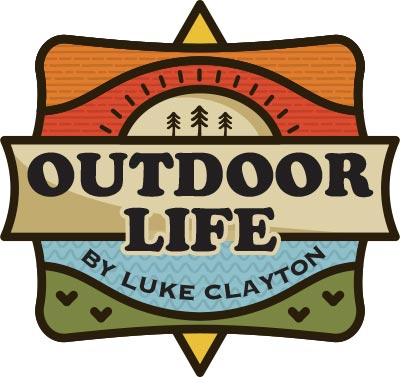 I had every detail of my hunt scripted. The recent high water had pushed the wild porkers out of the bottoms and the trail camera I have running near a corn feeder indicated lots of activity around sunset every day. I wanted to put my CVA Optima muzzleloader to work and checked the zero on the scope a couple days before the hunt, it was shooting dead on at 100 yards, all good! I planned to film the muzzleloader hunt for our TV show “A Sportsmans Life” which airs on several networks including Carbon TV and YouTube so I made sure the video camera battery was well charged and plenty of room on the SD card to store all the action. I had ‘brushed up’ my makeshift blind situated on a fence row about 60 yards from the feeder with freshly cut green cedar branches. Because of the muddy road and the need to walk back to my hunting area, I planned to keep only the choicest part of the hog I harvested, the backstraps. Hog numbers have been the highest I’ve seen in several years and the wild porkers have been tearing up my friends pasture. This was not a hog eradication hunt but rather a ‘pork procurement’ venture with one young good eater hog in mind.
I had every detail of my hunt scripted. The recent high water had pushed the wild porkers out of the bottoms and the trail camera I have running near a corn feeder indicated lots of activity around sunset every day. I wanted to put my CVA Optima muzzleloader to work and checked the zero on the scope a couple days before the hunt, it was shooting dead on at 100 yards, all good! I planned to film the muzzleloader hunt for our TV show “A Sportsmans Life” which airs on several networks including Carbon TV and YouTube so I made sure the video camera battery was well charged and plenty of room on the SD card to store all the action. I had ‘brushed up’ my makeshift blind situated on a fence row about 60 yards from the feeder with freshly cut green cedar branches. Because of the muddy road and the need to walk back to my hunting area, I planned to keep only the choicest part of the hog I harvested, the backstraps. Hog numbers have been the highest I’ve seen in several years and the wild porkers have been tearing up my friends pasture. This was not a hog eradication hunt but rather a ‘pork procurement’ venture with one young good eater hog in mind.
I enjoy cooking game almost as much as I enjoy hunting. I used to do restaurant reviews for a large newspaper and had the opportunity to dine at all the top game restaurants in the Dallas -Ft.Worth Metroplex . I learned to love German schnitzel which is pork loin sliced thinly, tenderized and seasoned with salt, pepper and garlic and then fried crispy. It is often served with pickled beets, sauerkraut and potatoes and hard bread. All the necessary items I had on hand before the hunt, I even found some Brotchen which is a hard German roll, all I needed was the fresh pork!
Sunset this past week was a few minutes before eight and a big groups of sows with pigs began to trickle out of the dense bottomland right on cue. Hunting and attempting to self film one’s hunt are two very different things. It’s hard enough to be stealthy and avoid spooking pigs with just a firearm or bow. Add the challenge of positioning a video camera at just the right angle to capture the shot and you have more than doubled the challenge. As the hogs began to approach the feeder, I had already centered the viewfinder on the area and widened the angle in hopes to catch everything on video. I had my CVA muzzleloader in position to shoot, the barrel resting on a piece of iron pipe used to brace the fence corner I was hiding behind. All was set for not only the harvest of my pork for the next day’s dinner but some great video to boot!
A total of four sows with about 25 pigs stormed out of the brush and with reckless abandon, began chowing down on the corn under the feeder. Hogs were everywhere, each jockeying for position to get the best spot to devour the golden kernels. Mature hogs can consume a great deal of corn in short order but those little week old piglets were gobbling up the corn like so many little vacuum cleaners! Then following the group was a lone hog that I first thought to be a sow but after close study through the muzzleloader’s scope, I determined it to be a young boar, not quite of breeding age. The sows guarded the corn with occasional mock charges at the 100 pound boar but he scurried out of range for an instant but then rush back in to gobble down a few kernels of corn. When the porkers were finally settled down and eating like, well… hogs, I reached up and punched the start button on the video camera but I didn’t take time to peer around the camera and make sure the red record light was on. You have probably already anticipated what happens next. The hogs were in great focus on the screen but… the camera was not filming. I had not checked to make sure it was running!
The discharge of a muzzleloader on camera is pretty impressive to watch. One moment you’re watching the targeted animal and with a loud KABOOM, the entire scene is obscured with thick white smoke. There was little wind and the smoke hung out in front of my little blind for a good twenty seconds or so. The shot looked good but I honestly couldn’t see if my pork was on the ground or not. I reached up to turn the camera off but alas! There was no red light indicated it had been running and sure enough when I plugged the SD card into my PC back at home, there was no muzzleloader discharge or video of pigs under the feeder for that matter but there was one very dead hog on the ground, and two very lean pork backstraps that I went to work on out in my little cooking shack back at home. My plan had almost been a one-hundred percent success. I had the pork but not the video! I proceeded to cut the loin into very thin fillets, across the grain and season with Kosher salt, garlic powder and black pepper. Into the fridge the very fresh pork went and into bed went I. I was soon comfortably watching a rerun of Dragnet on one of the streaming TV networks my normal bedtime, one of the big advantages of hunting very close to home.
The next day for lunch I tenderized the little fillets with a meat hammer, dusted them with flour and fried them until crispy. My son joined me for a German lunch of schnitzel, pickled beets, potatoes, sauerkraut and Brotchen, the hard German rolls. After enjoying a very tasty meal of very fresh pork, I vowed to make a return hunt this week and capture the hunt on film. You can bet I will watch for the little red light indicating the camera is actually running!
Email outdoor writer Luke Clayton through his website www.catfishradio.org
- Hits: 39


